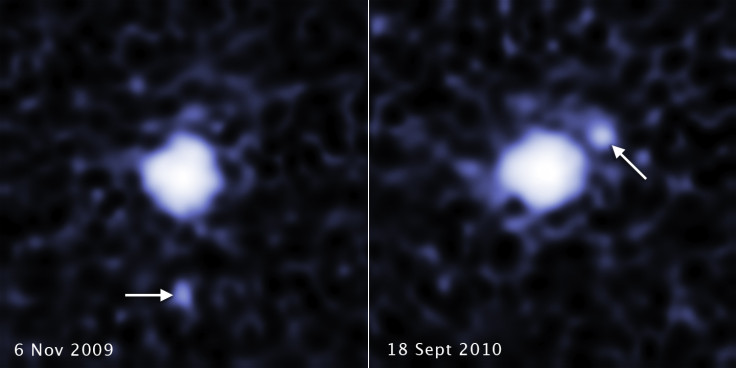Nasa discovers a moon orbiting the third largest dwarf planet in our solar system
The discovery shines light on how moons were formed in the young solar system.

Astronomers have discovered a moon orbiting the third largest dwarf planet catalogued as 2007 OR10. Nasa's Hubble telescope and two other space observatories helped astronomers spot the duo, which reside in a freezing area on the outskirts of our solar system, called the Kuiper Belt that Nasa describes as "a realm of icy debris left over from our solar system's formation 4.6 billion years ago."
This discovery adds to the fact that most of the dwarf planets in the Kuiper Belt "larger than 600 miles across" have companions. Nasa said that the existence of these space bodies "provide insight into how moons formed in the young solar system."
"The discovery of satellites around all of the known large dwarf planets - except for Sedna - means that at the time these bodies formed billions of years ago, collisions must have been more frequent, and that's a constraint on the formation models," Csaba Kiss of the Konkoly Observatory in Budapest, the lead author of the paper announcing the discovery of the moon, said in a statement. "If there were frequent collisions, then it was quite easy to form these satellites."
The bodies inhabiting the Kuiper Belt likely slammed into each other given how crowded the region is, Nasa said. "There must have been a fairly high density of objects, and some of them were massive bodies that were perturbing the orbits of smaller bodies," John Stansberry of the Space Telescope Science Institute in Baltimore, Maryland said. "This gravitational stirring may have nudged the bodies out of their orbits and increased their relative velocities, which may have resulted in collisions."
However, astronomers believe that the speed of the colliding objects couldn't have been either too fast or too slow. If the collision speed was too fast, it would have resulted in tons of debris that could have escaped from the system. On the other hand, if the collision speed was too slow, it would only have produced an impact crater.
A brief history of 2007 OR10
According to Nasa, 2007 OR10 is one among "an exclusive club of nine dwarf planets" and was discovered in 2007 by astronomers Meg Schwamb, Mike Brown, and David Rabinowitz, who stumbled onto the body during a survey, searching for distant solar system bodies.
How was the moon found?
Astronomers found the moon in the dwarf planet's archival images, which were taken by Hubble's Wide Field Camera 3. However, the astronomers were first tipped off about the moon's existence by Nasa's Kepler telescope's observations of 2007 OR10. Kepler's observations revealed that the dwarf planet has a slow rotation period of 45 hours.
"Typical rotation periods for Kuiper Belt Objects are under 24 hours," Kiss said. "We looked in the Hubble archive because the slower rotation period could have been caused by the gravitational tug of a moon. The initial investigator missed the moon in the Hubble images because it is very faint."
The moon was spotted in two separate Hubble images that were taken a year apart, which revealed that the moon is gravitationally bound to the dwarf planet "because it moves with the dwarf planet, as seen against a background of stars."
© Copyright IBTimes 2025. All rights reserved.






















